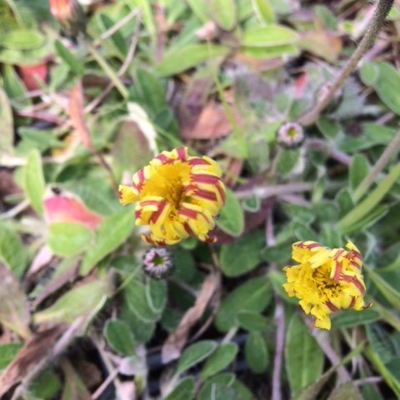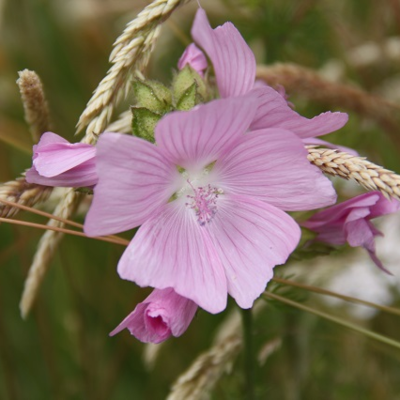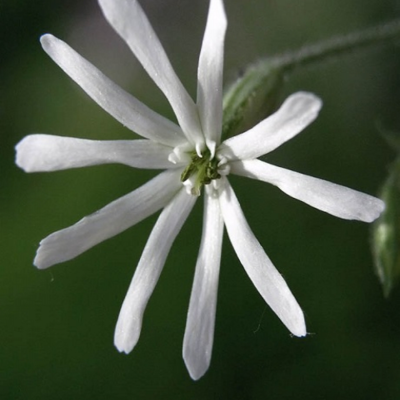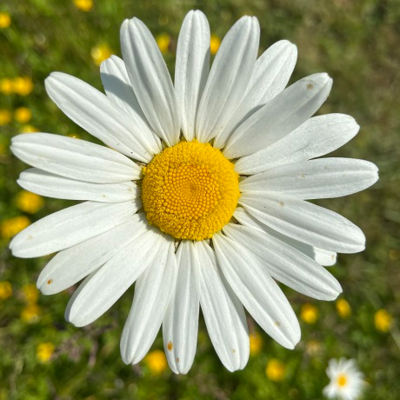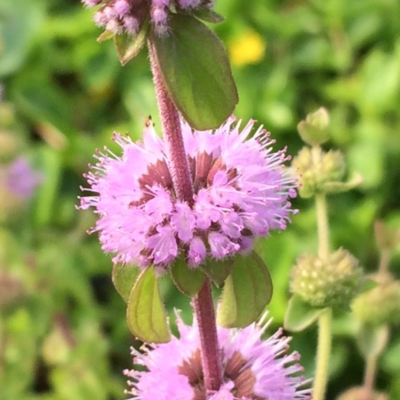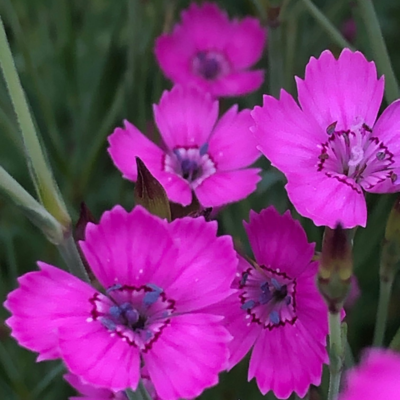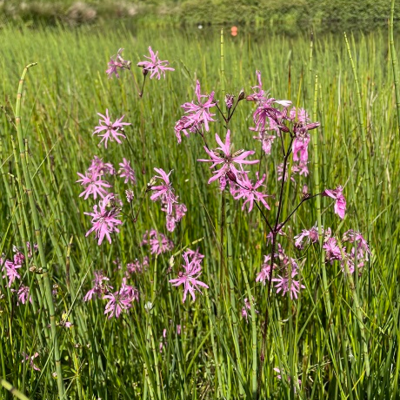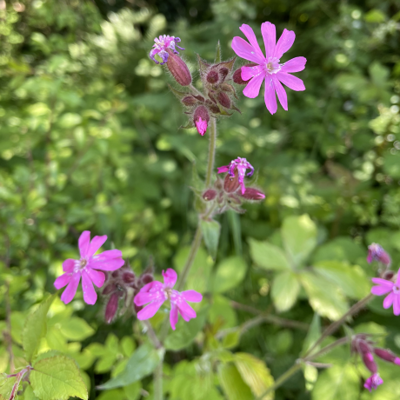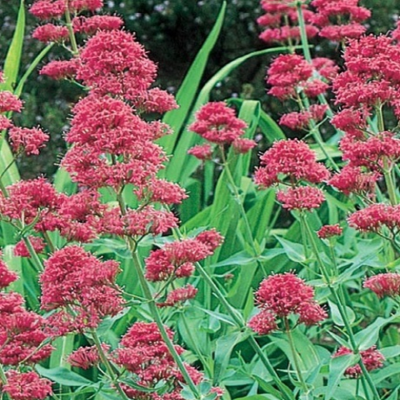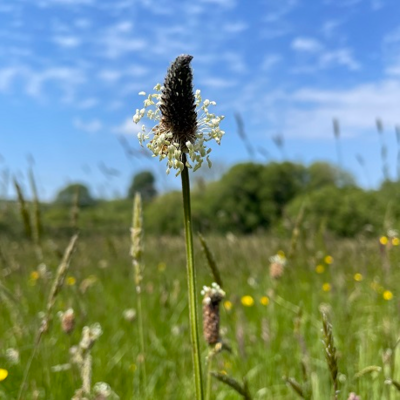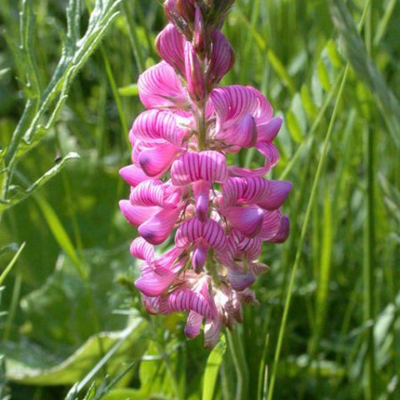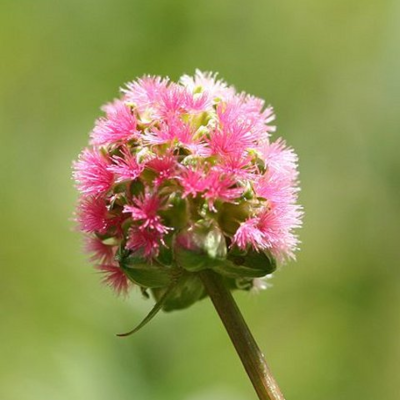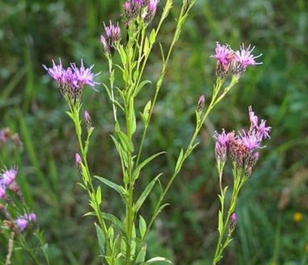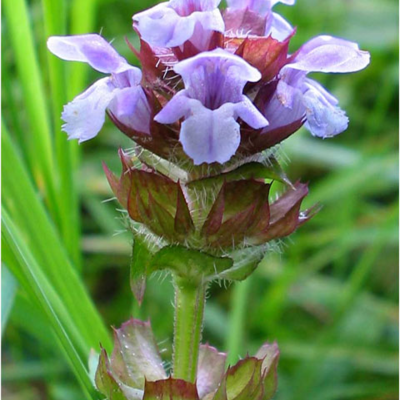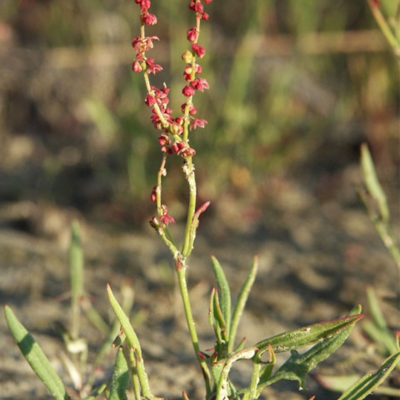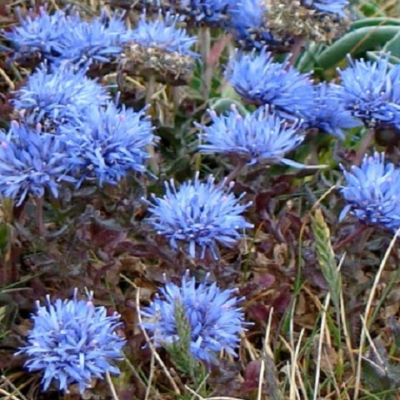Wildflower Plants A to Z
Choose from our entire range of over 100 wildflower plug plants, expertly grown in our very own nursery from high quality, UK native wildflower seed. Our wildflower plugs are ready to be planted straight out into your garden or meadow as soon as they arrive, all year round. Buying individual wildflower plants is one of the best ways to establish your chosen wildflower species, planted individually or as part of a more diverse meadow created from our range of wildflower seeds.
Don't hesitate to get in touch to speak to one of our experts or request a catalogue to view our full range. Ordering regularly or looking for large volumes? Click here to apply for a trade account today - we review all applications within one working day.
The citrus yellow petals of the Mouse-Ear Hawkweed's florets give it a ragged resembance to its relative, the Common Dandelion, they can be easily told apart by the former's attractive crimson outer petals and leaves covered in wooly white hairs. An interesting combo of colours for decorating any environment.
- Type: Perennial
- Height: 5-30cm.
- Flowers: May to October
- Soil requirement: Well-drained
- Light requirement: Full sun
- Natural habitat: Short pastures, free-draining grassland, sandy dunes, heaths
- Also known as: Blood of St John, Felon Herb, Mouse Ear, Fellon Herb

Plants for Pollinators highlights plants selected by the RHS as scientifically proven to tackle the declines in bees, butterflies and other pollinators.
The Musk Mallow- so named for its musky, strong scent which only gets stronger in the summer warmth- produces pastel pink, heart-shaped petals; no wonder mythology treats it as a flower of love! Beloved by bees, and its precious blooms are an extra-sweet sight in the garden.
- Type: Perennial
- Height: 30-90cm.
- Flowers: July-September
- Soil Requirement: Well-drained
- Light Requirement: Full sun
- Natural Habitat: Hedgerows, meadows
- Also known as: Abelmosk, Ambrette
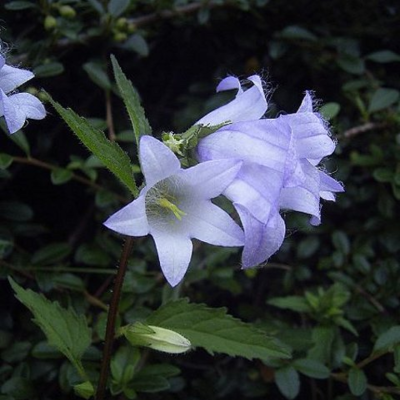

Plants for Pollinators highlights plants selected by the RHS as scientifically proven to tackle the declines in bees, butterflies and other pollinators.
Though named for its nettle-like leaves, one mustn’t overlook the beauty of this bloom’s bells of pale, bluish-purple petals. Best planted in a dry, shady spot.
- Type: Perennial
- Height: 50–100cm.
- Flowers: June-September
- Soil Requirement: Well-drained
- Light Requirement: Full sun or partial shade
- Natural Habitat: Woodlands, hedgebanks
- Also known as: Blue Devils, Gloves Of Mary, Throatwort
This spindly-white snowflake of a flower have a dainty beauty to them, especially on their pink-tinted, drooping stalks. They’re night-scented flowers, which means that they’re ideal for pollinators.
- Type: Perennial
- Height: 25–60cm.
- Flowers: May-July
- Soil Requirement: Well-drained, dry
- Light Requirement: Full sun
- Natural Habitat: Coastal areas, cliffs, grasslands
- Also known as: Sea Pink, Seaside Catchfly

Plants for Pollinators highlights plants selected by the RHS as scientifically proven to tackle the declines in bees, butterflies and other pollinators.
Though it shares the same narrow, pearly white petals radiating from central sunny yellow florets, the Ox-Eye Daisy is much larger than the typical lawn daisy, with flower heads growing up to 5cm wide. A robust flower with classic charm, and perfect for pollinators to boot.
- Type: Perennial
- Height: 30-60cm.
- Flowers: May-August
- Soil Requirement: Well-drained
- Light Requirement: Full sun
- Natural Habitat: Meadows, road verges
- Also known as: Marguerite, Pretty Maids, Dog Daisy
The Pendulous Sedge is a popular pond-side plant, and for a good reason- its nodding, tufted heads of grassy-green and golden-brown flowers really complete the mood of a marshy meadow, and are attractive to wildlife as well! One of the tallest species of sedge, this boisterous and hardy plant will self-seed readily.
- Type: Perennial
- Height: 100-140cm.
- Flowers: May-June
- Soil Requirement: Moist
- Light Requirement: Partial shade
- Natural Habitat: Marshes, river banks, wet woodlands
- Also known as: Great Pendulous Sedge
Unique lilac flowers that emit a very strong fragrance of spearmint when crushed that's commonly used in aromatherapy. This species has been known to be used in herbal medicine as an insect repellent and antiseptic.
- Type: Perennial
- Height: 10-25cm
- Flowers: August onwards
- Soil requirement: Damp
- Light requirement: Full sun or partial shade
- Natural habitat: Grassland, meadows, roadsides
- Also known as: Pennyrile, Squaw Mint, Mosquito Plant, Pudding Grass
The county flower of Roxburghshire is certainly well-named, as its toothy, cerise pink flowers with deep-rose central markings are among our most vivid, and carry all the allure of a fairytale maiden. Recommended for rockeries, this bloom's beauty is easy to get lost in, growing in clusters in a mat of dark silver-green foliage.
- Type: Perennial
- Height: 10-15cm.
- Flowers: May-August
- Soil requirement: Well-drained
- Light requirement: Full sun
- Natural habitat: Hillsides, pastures, dry banks
- Also known as: Lady's Cushion, Meadow Pink, Spink
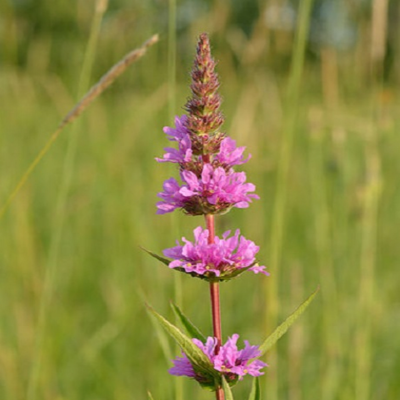

Plants for Pollinators highlights plants selected by the RHS as scientifically proven to tackle the declines in bees, butterflies and other pollinators.
A robust marsh flower which produces tall plumes of magenta blooms. Perfect for the pondside- let them loose and enjoy these sensational spikes of colour as they bring in bees!
- Type: Perennial
- Height: 60-120cm.
- Flowers: June-September
- Soil Requirement: Moist
- Light Requirement: Full sun or partial shade
- Natural Habitat: Marshes, riverbanks, fens
- Also known as: Black Blood, Rainbow Weed, Red Sally
What’s better than spikes of snapdragon-like wildflowers? This particular plant specimen’s vivid violet colouration add a rich and regal splash of colour in beds, borders and gravel gardens, as well as being beneficial for bees and being super easy to naturalise.
- Type: Perennial
- Height: 22-60cm.
- Flowers: June-October
- Soil Requirement: Well-drained, sandy
- Light Requirement: Full sun
- Natural Habitat: Waste ground, rocky soil

Plants for Pollinators highlights plants selected by the RHS as scientifically proven to tackle the declines in bees, butterflies and other pollinators.
So-named for its feathery, forked flowers in flamingo pink, we recommend these raggedy riches for a lot of reasons. Planted in a marshy spot, these bright bursts of streaming pink petals will help to bring in bees and butterflies!
- Type: Perennial
- Height: 30-60cm.
- Flowers: May-July
- Soil Requirement: Moist
- Light Requirement: Full sun or partial shade
- Natural Habitat: Woodland, wetlands
- Also known as: Cuckoo Hood, Meadow Pink, Wild William

Plants for Pollinators highlights plants selected by the RHS as scientifically proven to tackle the declines in bees, butterflies and other pollinators.
In spite of its name, the Red Campion boasts eye-catching fuschia petals, though planted with White Campion, they may produce precious, pastel-pink hybrids. Regardless, they make a welcome splash of colour in a shady spot, and they’re highly attractive to bees!
- Type: Perennial
- Height: 30-60cm.
- Flowers: April-September
- Soil Requirement: Well-drained
- Light Requirement: Partial Shade
- Natural Habitat: Hedgerows, woodlands
- Also known as: Hare’s Eye, Ragged Jack, Adder’s Flower
Although similar in looks to the stinging nettle, Red Deadnettle has harmless, heart-shaped foliage with a purple tint. As an early-blooming plant, these whorls of hooded flowers in ruby red to pinkish-purple are a prominent source of early pollen for bees as they build up their nest.
- Type: Annual
- Height: 5-30cm.
- Flowers: March - October
- Soil requirement: Moist
- Light requirement: Full sun, partial shade
- Natural habitat: Waste grounds, field edges, roadside verges
- Also known as: Purple Deadnettle, Purple Archangel
This item is currently unavailable
A colourful, tall-growing wildflower, recommended for rockeries or dry stone walls. A brilliant bloom for brightening borders, as its densely clustered flowers range in colour from crimson to magenta-pink, rarely even blooming in white. What’s more, these long-lasting vivid flowers self-seed readily and attract pollinators- no wonder it’s been a popular pick for British gardens since the 17th century!
- Type: Perennial
- Height: 60-90cm.
- Flowers: May-October
- Soil Requirement: Well-drained, dry
- Light Requirement: Full sun
- Natural Habitat: Coastal areas, roadside verges
- Also known as: Fox’s Brush, Jupiter’s Beard, Pretty Betsy
True nature-lovers can give little bit back to nature with this rugged and robust meadow plant. The cream-coloured anthers that give colour to the Ribwort Plantain's spikes of sharp umber petals also serve as a vital food source for pollinators and other animals. A good addition to meadows that's easy to naturalise.
- Type: Perennial
- Height: 60-90cm.
- Flowers: April-September
- Soil Requirement: Well-Drained
- Light Requirement: Full or partial shade
- Natural Habitat: Grasslands, roadsides
- Also known as: Black Jack, Hen Plant, Ribgrass
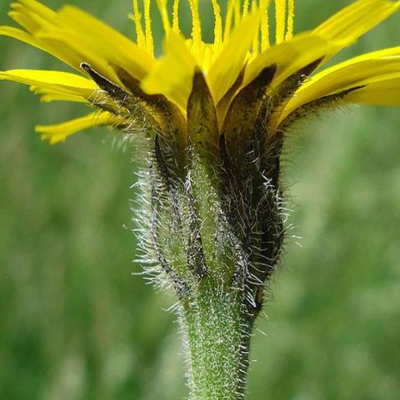

Plants for Pollinators highlights plants selected by the RHS as scientifically proven to tackle the declines in bees, butterflies and other pollinators.
Though this warm-paletted wildflower's plumes of canary-yellow petals look like that of dandelion, one can tell the Rough Hawkbit apart by their larger heads with shades of red and orange on the outer florets, as well as a pleasing fragrance which helps to bring bees and butterflies to your garden.
- Type: Perennial
- Height: 15-50cm.
- Flowers: June-October
- Soil Requirement: Well-drained, sandy
- Light Requirement: Full sun
- Natural Habitat: Grasslands, rocky ridges, pathways.
- Also known as: Greater Hawkbit
These upright spikes of nectar-rich, stripey fuchsia flowers are your best bet for a bloom that’s beneficial to the wildlife of your wild meadow- it’s best grown with grasses to balance out both plants and best show off its vivid colouration!
- Type: Perennial
- Height: 40–50cm.
- Flowers: July-September
- Soil Requirement: Well-drained, chalky
- Light Requirement: Full Sun
- Natural Habitat: Meadows, Foot Paths
- Also known as: Esparsette, French Grass, Holy Clover

Plants for Pollinators highlights plants selected by the RHS as scientifically proven to tackle the declines in bees, butterflies and other pollinators.
A smaller species of burnet with miniature, round red flowers growing in clusters, as well as edible toothed leaves which are pleasantly scented when crushed.
- Type: Perennial
- Height: 20-50cm.
- Flowers: May-August
- Soil Requirement: Well-drained
- Light Requirement: Full sun
- Natural Habitat: Chalky grasslands
- Also known as: Garden Burnet, Pimpernelle, Toper’s Plant
Named for its serrated, saw-like leaves, these tall-growing and hardy plants are a relative of the daisy, which you’d hardly believe from their violet, thistle-like flowers. They make a sharp statement in a wild meadow!
- Type: Perennial
- Height: 70–120cm.
- Flowers: July-September
- Soil Requirement: Well-drained, chalky
- Light Requirement: Full Sun or partial shade
- Natural Habitat: Meadows, Forest edges
- Also known as: Dyer's Plumeless Saw-Wort
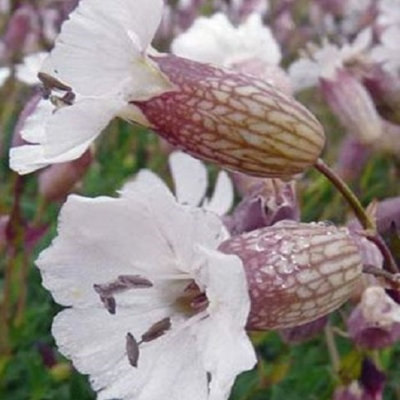

Plants for Pollinators highlights plants selected by the RHS as scientifically proven to tackle the declines in bees, butterflies and other pollinators.
A coastal campion. Grows a bladder-like calyx coloured in coral, ending in bubbly white flowers which look brilliant washing over a rockery like sea foam.
- Type: Perennial
- Height: 15–30cm.
- Flowers: June-August
- Soil Requirement: Well-drained, sandy
- Light Requirement: Full sun or partial shade
- Natural Habitat: Coastal areas, cliffs
- Also known as: Sea Pink, Seaside Catchfly

Plants for Pollinators highlights plants selected by the RHS as scientifically proven to tackle the declines in bees, butterflies and other pollinators.
This whisical wildflower's short spikes of violet and burgundy beauty are just as pretty as its name! Though it's named for its medicinal uses, we think that there's nothing more rejuvinating than the sight of this multicoloured majesty flooding beds or wild meadows, as it naturalises to any environment and self-seeds readily.
- Type: Perennial
- Height: 20–30cm.
- Flowers: June-September
- Soil Requirement: Well-drained or moist
- Light Requirement: Full sun or partial shade
- Natural Habitat: Grasslands, woodlands
- Also known as: Blue Lucy, Heart of the Earth, Thimble-Flower
A shorter, self-seeding sorrel which bears the same upright, slender stems of scarlet and hot pink petals as its counterparts. Its small but vivid flowers add a lot of flavour to a garden, and perhaps even more flavourful are its sword-shaped basal leaves, which can even be used in making food!
- Type: Perennial
- Height: 7–25cm.
- Flowers: May-August
- Soil Requirement: Well-drained, acidic
- Light Requirement: Full sun
- Natural Habitat: Grasslands, woodlands, verges
- Also known as: Sour Weed
These soft-looking, bright blue blooms pair perfectly with other fluffy-petalled flowers, especially in yellows and pinks, such as hawk-bit and knapweed. An excellent plant for pollinators; bees and butterflies go baa-rmy for them! Recommended for rockeries and rough meadows, or anywhere with sandy soil.
- Type: Biennial
- Height: 20-50cm.
- Flowers: May-September
- Soil Requirement: Well-drained, sandy
- Light Requirement: Full Sun
- Natural Habitat: Grassland, clifftops, coastal areas
- Also known as: Shepherd’s Scabious
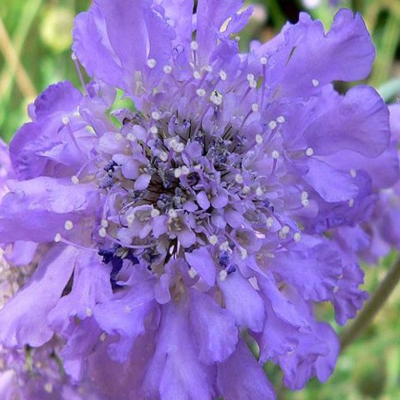

Plants for Pollinators highlights plants selected by the RHS as scientifically proven to tackle the declines in bees, butterflies and other pollinators.
Though smaller than certain other scabious, these compact, cluster-growing flowers are best suited for complimenting beds and borders rather than taking centre stage, whilst still bearing the hardiness and pretty, periwinkle blue florets of its brethren. In fact, the Small Scabious bears five-petalled florets rather than the regular four- sometimes, it’s the little things that matter.
- Type: Perennial
- Height: 60–70cm.
- Flowers: July-August
- Soil Requirement: Well-drained, chalky
- Light Requirement: Full sun
- Natural Habitat: Grasslands, verges
- Also known as: Curl-Doddy, Lilac-Flowered Scabious
Choosing different wildflower plants by species gives you complete control over when you plant them, where you plant them and what the end result will be. And buying wildflower plug plants instead of seeds, means that you don't have to wait for them to germinate - perfect if speed is of the essence!
The full range of over 100 British wildflower plants species from Boston Seeds is available to buy online in trays of 25, 150 and 500 plug plants and all are available with nationwide delivery.
Want to learn more about the likes and dislikes of your favourite wildflower plants? Our handy wildflower species quide will tell you all you need to know - yours to download and keep for FREE.
Buy With Confidence

We’re dedicated to making the highest quality, professional outdoor products available to everyone to truly make the most of their outdoor spaces - lawns, gardens, landscapes, equine, sports and agriculture. Trusted by over 200,000 happy customers with a reputation for professional quality, world-class service and outstanding value for everyone, since 2002.

We take quality seriously, supplying products you can trust. Our grass seed is DEFRA-certified for purity and germination, utilising the highest quality cultivars recommended by the Sports Turf Research Institute. Wildflower products are of known UK provenance and flower bulbs are sourced directly from the finest growers in the UK and the Netherlands.
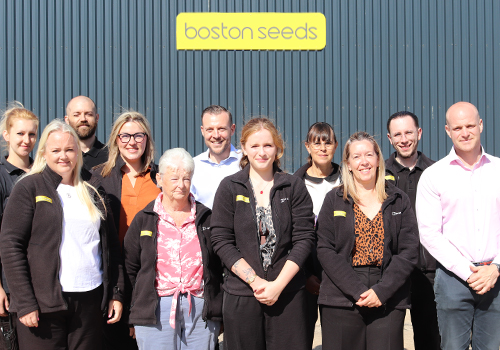
With hundreds of items available for next day delivery, we take pride in getting your order to you quickly and efficiently. Our team of dedicated experts and friendly advisors are here for you when you need them. That’s why you can call us and get straight through to an advisor from 9am-5pm, Monday to Friday, or email us for a rapid response.
